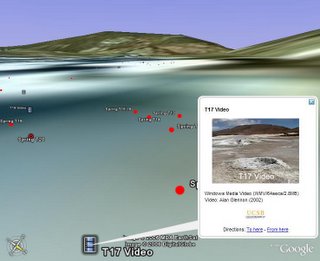Local meets SimCity
Using an ajax-enabled interface with similar look and feel as other popular map sites, Edushi serves idealized 2.5D, Sim-City-like city maps. As observed by a description at the Virtual Terrain Project, the maps are "clearly built on an extremely detailed and impressive GIS database". For instance, each building--and there are thousands--holds the footprint, relative height, and a general appearance of its real-life counterpart. Also, if you click on many structures or landmarks, a photograph and other information appears on the sidebar.
I do not read Chinese, but it looks like Edushi is using the following data:
- buildings/landmarks: footprints, heights, idealized appearance, photographs.
- street map data (including 3D data for overpasses)
- street addresses
- a business database
- land cover (parks, water, sidewalks, etc.)
- smoothed terrain
- bus stops
- construction data (cranes are seen around some buildings under construction)
Currently, the site includes portions of Foshan, Hangzhou, Qingdao, Shanghai, Shenzen (in beta), and Qingdao. Though you can toggle on-and-off the buildings, no satellite imagery or aerial photography exists to complement the maps.
Edushi is an impressive implementation, and further illustrates the lightning pace of internet-based mapping experimentation and innovation.

Comments on Map Cognition...
I do not know of research to show that 2.5D perspective maps are more meaningful for navigation or that such maps necessarily allow humans to better understand their environment. However, the existing research would have been done on static maps. These new maps and renderings allow for interaction by the user, and, importantly, that interaction can sometimes occur in the field. How such maps and renderings effect our understanding of the world, how we navigate, and how we make spatial decisions, is a rich subject for study. Another important question is determining how quickly we can mentally query and process information from these maps (and at what scales)--in order to determine whether they make a desirable interface for in-vehicle navigation.



